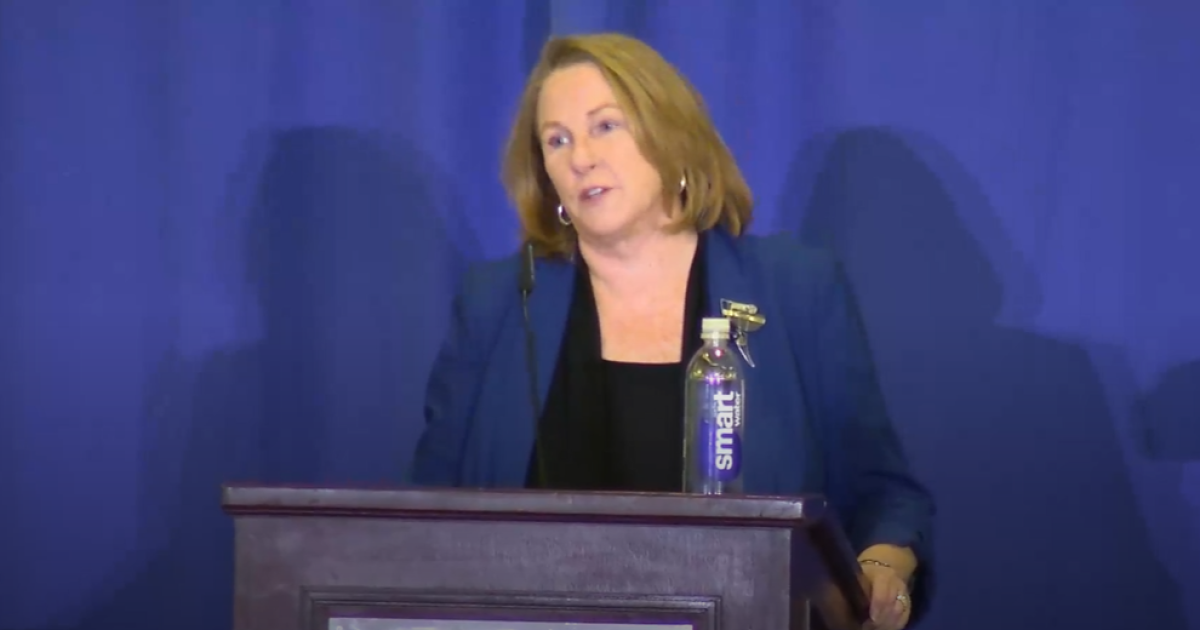Accounting
Taxpayer Advocate spotlights IRS delays in ERC claims and ID theft assistance, but sees improvements in IRS
Published
4 months agoon


National Taxpayer Advocate Erin Collins released her
“For the first time since I became the National Taxpayer Advocate in 2020, I can begin this report with good news: The taxpayer experience has noticeably improved,” Collins wrote. “In 2024, taxpayers and practitioners experienced better service, generally received timely refunds, and faced shorter wait times to reach customer service representatives…. After receiving multiyear funding, the IRS has [also] made major strides toward improving its taxpayer services and information technology (IT) systems.”
However, the IRS faces a
In her report, Collins criticized the long wait times for legitimate claims. She noted that as of Oct. 26, 2024, the IRS faced a backlog of about 1.2 million ERC claims, with many claims pending for over a year. While the IRS has valid concerns about paying ineligible claims, the slow processing time is harming many eligible businesses that are relying on these funds to pay expenses, Collins noted. Other concerns include lack of transparency for businesses trying to track the status of their claims; confusing disallowance letters that have omitted critical information; the use of audit-like procedures for disallowed claims without standard taxpayer audit protections; and significant delays for businesses whose refund checks were stolen and have waited months or longer to receive replacement checks. After the National Taxpayer Advocate’s report went to press, Werfel announced in mid-December he expects that approximately 500,000 additional claims will be processed in 2025, but the details and timing of the refunds are still to be determined, Collins noted.
Identity theft victim assistance
The report also pointed to continuing delays in resolving identity theft cases. For cases closed by the IRS’s Identity Theft Victim Assistance unit in fiscal year 2024, the average time it took the IRS to resolve ID cases and issue refunds to the affected victims was nearly two years. The delays affected nearly half a million taxpayers and were even worse than the delays seen in FY 2023, when cases took almost 19 months to resolve. Collins called the delays “unconscionable” and recommended the IRS prioritize identity theft case resolution by keeping all IDTVA employees focused on these cases instead of reassigning them to other tasks during the filing season. She urged the IRS to reduce case resolution times to 90 days or less.
Taxpayer service and tech upgrades
Collins stressed the need for adequate funding to support critical taxpayer services and technology upgrades. She noted that the bulk of the nearly $80 billion in multiyear IRS funding provided by the Inflation Reduction Act was allocated for tax law enforcement and has been controversial. She also notes, however, that there has been bipartisan support for the smaller amounts allocated for taxpayer services and IT modernization. Stressing the importance of taxpayer services funding, she urged Congress, if it cuts IRA enforcement funding, not to make commensurate cuts to taxpayer services and IT. Congress should not, Collins urged, “inadvertently throw out the baby with the bathwater.”
The report pointed to a number of examples of improvements the IRS has made using its multiyear funding. Taxpayer services funding has enabled the IRS to hire more customer service representatives, allowing the agency to answer nearly 9 million more telephone calls than two years earlier and to cut in half the average time needed to process individual taxpayer correspondence from about seven months to about three and a half months. The IRS has also expanded in-person help at its Taxpayer Assistance Centers, adding evening and weekend service in many locations to accommodate taxpayers who are unable to visit during normal business hours.
Business Systems Modernization funding has enabled taxpayers to resolve issues without the involvement of an IRS employee. With these improvements, taxpayers can now get more information and transact more business with the IRS through their online accounts, use voicebots and chatbots to get answers to many of their questions, submit correspondence to the IRS electronically and communicate with the IRS through secure messaging in pending cases. The IRS now allows taxpayers to submit 30 of the most common taxpayer forms from mobile devices, helping the estimated 15% of Americans who rely solely on their smartphones for internet access.
Tax return processing delays
The report noted that continuing delays in IRS return processing are frustrating taxpayers and causing tax refund delays. The IRS receives more than 10 million paper-filed Forms 1040 each year and over 75 million paper-filed returns and forms. Until recently, IRS employees had to manually transcribe the data from those returns into IRS systems. While the IRS has made progress on automating return processing by scanning more than half of paper-filed returns and forms, it still has a long way to go to digitize all paper. E-filed returns are sometimes rejected, and nearly 18 million (about 12%) of e-filed Forms 1040 were rejected in the past year. The IRS generally rejects returns flagged by its fraud detection filters, but most rejected returns are valid, requiring taxpayers to jump through additional hoops to resubmit their returns electronically or submit their returns on paper. The report discusses the strain this puts on taxpayers, especially low-income taxpayers who are eligible for refundable Earned Income Tax Credit benefits. The Taxpayer Advocate Service recommends the IRS continue its efforts to automate tax processing including digitizing nearly all paper-filed returns by the 2026 filing season and enabling electronic processing of amended tax returns.
While taxpayer service has improved across the IRS’s three main channels — telephone, in-person and online — the report found significant service gaps remain. The IRS achieved an 88% “Level of Service” on its Accounts Management lines during the filing season, but this measure excludes calls directed to telephone lines that fall outside the “Accounts Management” umbrella (30% of all calls in FY 2024), calls where a taxpayer hangs up before being placed in a calling queue, and calls made outside the filing season. Overall, the level of service for all toll-free lines in FY 2024 was just 56%, with only 31% of callers reaching an assistor. Of the 6.2 million calls the IRS received from taxpayers whose returns had been stopped by the IRS’s identify theft filters and who were calling to authenticate their identities, the IRS answered only about 20%. This has left millions of taxpayers without the support they need. TAS recommends the IRS adopt more accurate service metrics and prioritize answering non-Accounts Management telephone lines that serve largely vulnerable taxpayer populations. Among these are the Installment Agreement/Balance Due, Taxpayer Protection Program, and Automated Collection System telephone lines.
Werfel response
IRS Commissioner Danny Werfel responded to the report. “The National Taxpayer Advocate’s report recognizes that the IRS has made historic progress over the last two years improving phone, online and in-person services by reducing wait times on toll-free lines, providing enhanced technology and adding new digital tools,” Werfel said in a statement. “These improvements reflect what a well-funded IRS can do to help taxpayers and tax professionals on many issues, including delivering tax refunds quickly to more than 100 million taxpayers. It’s important to continue that momentum because we recognize the agency’s work isn’t done – not by a longshot. It’s vital that the IRS continue this progress to better serve taxpayers and the nation. The IRS has already made improvements in many of the areas outlined by the Taxpayer Advocate and will continue to do so in 2025. But as the Taxpayer Advocate noted, having sufficient resources is critical to the IRS since so many of our efforts require improving digital options and capabilities while having enough staff to process tax returns, manage correspondence and answer phone calls year-round.”
Employee recruitment challenges
The report pointed to continuing challenges in employee recruitment, hiring, training and retention at the IRS. It noted the IRS faces ongoing difficulties in hiring, training and maintaining employees. Job postings aren’t consistently targeted to reach the desired candidates. The IRS often takes several months to hire new employees, leading some candidates to accept other offers. New hires require a great deal of training before they can become productive employees, and experienced employees often need to be reassigned to train them. A Congressional Budget Office study published in 2024 found that federal employees with professional degrees earn almost 29% less than their non-federal counterparts, making it harder for the IRS to compete in the tight job market. The report recommended the IRS explore alternative recruitment platforms, review pay disparities and implement strategies to improve employee retention.
Minimum competency for preparers
The report also recommended Congress authorize the IRS to establish minimum competency standards for federal tax return preparers and revoke the identification numbers of sanctioned preparers. It noted the IRS receives over 160 million individual income tax returns each year, and most are prepared by paid tax return preparers. While some tax return preparers must meet licensing requirements (such as CPAs, attorneys and Enrolled Agents), most tax return preparers are not credentialed. Numerous studies have found that non-credentialed preparers prepare inaccurate returns disproportionately, causing some taxpayers to overpay their taxes and other taxpayers to underpay their taxes, which subjects them to penalties and interest charges. Non-credentialed preparers also drive much of the high improper payments rate attributable to wrongful EITC claims, the report noted. In FY 2023, 33.5% of EITC payments, amounting to $21.9 billion, were estimated to be improper, and among tax returns claiming the EITC prepared by paid tax return preparers, 96% of the total dollar amount of EITC audit adjustments was attributable to returns prepared by non-credentialed preparers.
The report noted that federal and state laws generally require lawyers, doctors, securities dealers, financial planners, actuaries, appraisers, contractors, motor vehicle operators, and barbers and beauticians to obtain licenses or certifications and, in most cases, to pass competency tests. The Obama, first Trump and Biden administrations have each recommended that Congress authorize the Treasury Department to establish minimum competency standards for federal tax return preparers. To protect taxpayers and the public, TAS likewise recommends Congress provide this authorization as well as authorization for the Treasury Department to revoke the Preparer Tax Identification Numbers of preparers who have been sanctioned for improper conduct.
The report called for expanding the U.S. Tax Court’s jurisdiction to hear refund cases. Under current law, taxpayers seeking to challenge an IRS tax-due adjustment can file a petition in the U.S. Tax Court, while taxpayers who have paid their tax and are seeking a refund must file suit in a U.S. district court or the U.S. Court of Federal Claims. Litigating a case in a U.S. district court or the Court of Federal Claims is generally more challenging, as the filing fees are relatively high, rules of civil procedure are complex, the judges generally do not have tax expertise and proceeding without a lawyer is difficult. By contrast, taxpayers litigating their cases in the Tax Court face a low $60 filing fee, may follow less formal procedural rules, are generally assured their positions will be fairly considered because of the tax expertise of the Tax Court’s judges, even if they do not present their arguments effectively, and can more easily represent themselves. For these reasons, the requirement that refund claims be litigated in a U.S. district court or the Court of Federal Claims effectively deprives many taxpayers of the right to judicial review of an IRS refund disallowance. In FY 2024, about 97% of all tax-related litigation was adjudicated in the Tax Court. TAS recommended Congress expand the jurisdiction of the Tax Court to give taxpayers the option to litigate all tax disputes, including refund claims, in that forum.
Other recommendations in the report included enabling the Low Income Taxpayer Clinic program to assist more taxpayers in controversies with the IRS. The LITC program assists low-income taxpayers and taxpayers who speak English as a second language. When the LITC program was established as part of the IRS Restructuring and Reform Act of 1998, the law limited annual grants to no more than $100,000 per clinic. The law also imposed a 100% “match” requirement, so a clinic cannot receive more in grant funds than it raises from other sources. The nature and scope of the LITC Program have evolved considerably since 1998, and those requirements are preventing the program from expanding assistance to a larger universe of eligible taxpayers. TAS recommended Congress remove the per-clinic cap and allow the IRS to reduce the match requirement to 25%, where doing so would expand coverage to additional taxpayers.
The report also recommended requiring the IRS to timely process claims for refund or credit. It noted millions of taxpayers file refund claims with the IRS each year. Under current law, there is no requirement that the IRS pay or deny them. It may simply ignore them. The taxpayers’ remedy is to file suit in a U.S. district court or the U.S. Court of Federal Claims. For many taxpayers, that is not a realistic or affordable option. The report says the absence of a processing requirement is a “poster child” for non-responsive government. While the IRS generally does process refund claims, the claims can and sometimes do spend months and even years in administrative limbo within the IRS. The report recommended Congress require the IRS to act on claims for credit or refund within one year and impose certain consequences on the IRS for failing to do so.
The report also recommended allowing the limitation on theft loss deductions in the Tax Cuts and Jobs Act to expire so scam victims aren’t taxed on the amounts stolen from them. Many financial scams involve the theft of retirement assets, the report noted. In a typical scam, a con artist may pose as a law enforcement officer, convince a victim that her retirement savings are at risk and persuade the victim to transfer her retirement savings to an account that the scammer controls. Then, the scammer absconds with the funds. Under the tax code, the victim’s withdrawal of funds from a retirement account is treated as a distribution subject to income tax and, if the victim is under age 59½, to a 10% additional tax as well. Thus, the victim may not only lose her life savings but also owe significant tax on the stolen funds. Prior to 2018, scam victims generally could claim a theft loss deduction to offset the stolen amounts included in gross income, but the Tax Cuts and Jobs Act eliminated the deduction. TAS recommends Congress allow this TCJA limitation to expire so the theft deduction is again available in these circumstances. Congress is currently planning to take up the expiring provisions of the Tax Cuts and Jobs Act this year.
You may like
Accounting
Savant Wealth Management acquires Corrigan Financial
Published
2 hours agoon
May 1, 2025
Savant Wealth Management acquired registered investment advisor Corrigan Financial, based in Middletown, Rhode Island, on April 30.
This deal expands Savant’s geographic footprint to 44 offices in 19 states. Terms of the deal were not disclosed.
Savant is a CPA-led, fee-only RIA based in Rockford, Illinois. It has 537 employees and is No. 1 on Accounting Today‘s Top 150 Firms by Assets Under Management list with $29.6 billion in AUM and $1.2 billion in assets under advisement as of March 31. It offers investment management, financial planning, retirement plans and family office services to financially established individuals and institutions, as well as corporate accounting, tax preparation, payroll and consulting through its affiliate Savant Tax & Consulting, and estate planning document preparation and other legal services through its affiliated law firm, Savant Legal.

“The Corrigan team shares our values, particularly in the area of lifelong learning,” Brent Brodeski, a CPA, founder and CEO of Savant, said in a statement. “It’s important to note that the majority of Corrigan’s financial planners hold the CPA license, given the importance of integrating tax planning into clients’ financial plans and the current nationwide shortage of CPAs. In addition, Corrigan takes a like-minded approach to planning and investments that we believe will help Savant build density and improve more lives in the northeast,.”
Corrigan is a 25-person, fee-only RIA with $1.15 billion in AUM. The firm offers personal financial planning, investment management, tax planning and estate planning services. It also prepares income tax returns for over 1,000 families. Corrigan’s tax service offering will be incorporated into the Savant Tax & Consulting business line.
“Savant’s tax focus was one of the major reasons we considered partnering with the firm, but we were also attracted to the firm’s long-term vision, which can help benefit both our clients and our team,” David Corrigan, a CPA, founder and principal shareholder of Corrigan, said in a statement. “Savant is a recognized leader among top CPA financial planning firms, and our shared commitment to comprehensive wealth management, including tax planning and preparation, made Savant a logical choice for our team.”
Savant is 65% employee owned. Corrigan and 15 shareholders of Corrigan Financial became member-owners upon joining Savant at close.

Enjoy complimentary access to top ideas and insights — selected by our editors.
The contentious 150-hour rule — the number of college credit hours required to sit the CPA exam — has been a sticking point in the profession since it became the standard in the 1990s. With an
Median annual salaries for entry-level accountants hover around $65,000, according to 2024
Next to lower wages, many have suggested that the time required to pursue a CPA license has been a major hurdle driving prospective talent into other financial services. As a result, the American Institute of CPAs and the National Association of State Boards of Accountancy have started to guide states through adopting additional licensure pathways.
These efforts have been met with optimism from state CPA societies and accounting students alike, but
Susan Speirs, chief executive of the Utah Association of CPAs, said that while the passage of a CPA licensure bill in the state is a good first step to address the talent shortage across the profession, it’s hardly the last.
“My hope would be that we can start discussing the real issues surrounding our profession such as firm models, salary models, image models, CPE models, PE models and more before the profession implodes on itself,” Speirs said.
Read more:
For Calvin Harris, chief executive of the New York Society of CPAs and a CPA who was licensed more than 20 years ago, a return to the former 120-hour standard isn’t as outlandish as it sounds.
“Where we’ve landed here in New York is that while we will continue to offer the pathway of 150 credit hours, we thought it was right to add back the 120-hour pathway,” Harris said. “In many ways it’s new since it hasn’t really been active, at least in New York, for more than two decades. But it’s also a return to a pathway [that previously existed].”
Regarding perspectives that lowering the credit hour threshold would yield less skilled accounts, Harris said that the total six years spent pursuing the accreditation has not and would not change. What would change is a contentious fifth year in school that could be a financial make-or-break for some students.
“We’re talking about socioeconomic barriers,” Harris said. “From a diverse profession perspective, we also see where that fifth year burdens underrepresented groups on a higher level.”
Leaders with the state CPA societies of Iowa and California have similar sentiments regarding the “extra” 30 hours spent towards a CPA license, and how the financial burden of those hours takes a different toll on underrepresented groups.
California’s
Read more:
States that have successfully
Dive into more coverage of the topic and the broader implications of the 150-hour rule below.

AICPA, NASBA mull alternative pathways to CPA licensure
In February, the American Institute of CPAs and the National Association of State Boards of Accountancy introduced proposed changes to the Uniform Accountancy Act model legislation that would provide states with codified language for drafting CPA licensure-focused bills.
Both organizations called upon the joint UAA committee to draft templated law language that involves a bachelor’s degree plus two years of experience as a state-determined pathway to licensure that incorporates a broad role for experience and individual-based practice privilege that incorporates a CPA’s ability to practice across state lines.
“The accounting profession has seen a remarkable convergence in recent weeks of stakeholders around flexibility that creates greater access for those who are interested in pursuing a career in accounting,” Susan Coffey, CEO of public accounting at the Association of International Certified Professional Accountants, told Accounting Today.
Read more:

PeopleImages/Getty Images
Could alternatives to the 150-hour rule create new talent pipelines?
For more than 20 years, the 150-credit hour rule for becoming a CPA has been the standard across the profession. But as a dwindling number of college students elect to major in accounting, combined with stagnating wages and the cost of higher education, that stands to change over the coming years.
Data gathered in a 2023 Center for Audit Quality study found that more than half of nonaccounting majors pegged higher starting salaries as the deciding factor for not studying accounting.
“If you just took [the Consumer Price Index] and applied it to the starting salary back in 1982, you’re very close to the starting salary of what the fifth-year students were a year ago, so the profession really hasn’t caught up,” Edward Wilkins, an accounting professor and former audit partner at a Big Four firm, told AT. “Did they ever really get credit for that fifth year if it was just a CPI adjustment?”
Read more:

Ohio, Virginia among host of states pushing past 150-hour rule
While
Utah Gov. Spencer Cox signed
States with bills in progress include Illinois, Indiana, Massachusetts, Minnesota and others, many of which have the backing of their state CPA societies.
Read more:

Iowa successfully adds new paths for CPA licensure
State legislators in Iowa, with the support of the Iowa Society of CPAs, have passed a bill that would create new alternatives for obtaining CPA licensure within the region.
Any changes stemming from the bill would go into effect on July 1, 2026, upon Gov. Reynolds signing it into law.
“This legislation reflects a forward-thinking approach to licensure that preserves the integrity of the CPA while opening the door to more aspiring professionals,” ISCPA interim CEO Ardis Kelley said in a statement. “At a time when the profession is experiencing a decline of new licensees and increase in retirements, this is a much-needed step to attract new talent.”
Read more:

Nick Fox – stock.adobe.com
Georgia CPA advocates successfully pass bill for CPA licensure
Among a host of states working to overhaul the traditional pathways to becoming a CPA, Georgia is one that has seen recent success.
Also included are provisions for allowing out-of-state CPAs to practice in Georgia. The bill awaits signing by Gov. Brian Kemp.
“The new pathways to CPA licensure and expanded practice privilege mobility are essential steps toward addressing the growing demand for skilled accounting professionals,” GSCPA CEO Boyd Search said in a statement.
Read more:
Accounting
The future of group audits oversight: Do we have too much regulatory gridlock?
Published
8 hours agoon
May 1, 2025

Audit regulators are increasing their focus on how group auditors identify, engage and supervise component auditors, sparking important discussions about effectiveness, practicality and unintended consequences.
Is this level of scrutiny necessary for all group audits, or should regulators take a risk-based approach? Are auditors spending too much time on reporting instead of enhancing audit quality? And with AI reshaping audit methodologies, why aren’t auditors leveraging real-time analytics to ensure they engage the right component auditors for high-risk areas?
These aren’t just compliance questions — they challenge the future of global audits, the role of technology and the balance between oversight and efficiency.
The group auditor’s dilemma
Every group audit presents unique risks — multiple jurisdictions, different reporting frameworks and varying component auditors. Group auditors cannot execute these audits alone; they must rely on component auditors positioned in every corner of the world. And let’s be honest — not all auditors are trained equally, adding complexity to the group auditor’s oversight responsibilities. The group auditor’s role is to demonstrate oversight, yet the expectations for how they supervise component auditors continue to evolve.
Group auditors face criticism for insufficient oversight, inconsistent risk assessments and overreliance on local teams. The common response — stricter oversight and more documentation. But is that truly the right answer?
A better solution may just be that group auditors equip (and train) their component auditors with the best tools available to assess and respond to risks effectively. Technology already delivers real-time risk insights and should be the standard for group audits. Instead of sending more checklists and outdated instructions, group auditors should adopt AI-driven risk assessments to focus oversight where it matters most. These tools empower group auditors to engage the right component auditors and enhance audit quality through smarter, more targeted supervision.
Some would say that minor discrepancies — like a misspelled name or failing to identify a component auditor — rarely impact audit quality in a meaningful way, but instead result in disproportionate administrative burdens. So are we just chasing our tails instead of truly improving audit quality?
The regulator’s position: valid concern or misplaced focus?
Regulatory scrutiny of group audits is increasing, but the impact on audit quality remains unclear. Many group auditors are already struggling to comply with evolving regulations, and additional oversight of how group auditors engage component auditors may not always provide commensurate value.
If audit quality is the endgame, then chasing every detail with a broad brush won’t cut it. It’s time to separate the wheat from the chaff — zero in on the highest-risk areas where it truly counts. A smart, risk-based approach does more with less, especially when resources are already stretched thin. Even if regulators intended to examine every component auditor, do they even have the resources to do so?
“Auditing the auditors” at scale is no small task. Scrutinizing every component auditor is unlikely to yield measurable improvements in audit quality and dilute attention from high-risk engagements. Expanding oversight without clear evidence of impact risks shifting the profession toward check-the-box compliance rather than demonstrating that regulatory review is working as intended.
Maintaining this level of scrutiny without modernization risks overwhelms both auditors and regulators — with little to show in terms of audit quality gains. If oversight efforts aren’t driving measurable improvements, it’s time to rethink the approach and double down on what truly moves the needle.
The technology imperative
AI, automation and analytics have transformed audits, allowing auditors to detect anomalies, assess risks and analyze full populations of data like never before.
Imagine if auditors used AI-powered analytics to monitor financial performance across subsidiaries, identifying inconsistencies and high-risk areas in real time. Group auditors would gain intelligent dashboards for visibility into component auditors’ testing procedures, while audit analytics tools pinpoint risks across global operations demonstrating true oversight.
This isn’t theoretical — it’s happening. Yet many auditors hesitate to scale these solutions, while regulators focus on manual oversight and increased documentation. The question isn’t “Can technology improve audit quality?” but rather, “Why aren’t auditors deploying it more aggressively?”
Regulators and auditors would be far more effective if they worked together to standardize and promote AI-driven audit analytics instead of expanding outdated oversight mechanisms. While AI is already helping auditors pinpoint high-risk areas and drive better audit outcomes, it’s not a silver bullet. It’s a powerful tool — but only when paired with professional judgment and strategic focus. Used wisely, AI and analytics can help direct regulatory inspections to the most critical areas of group audits, making oversight more targeted and effective.
If auditors are expected to adopt AI for sharper risk assessments, regulators need to walk the talk too. So why aren’t more regulators embracing AI to sharpen their inspections? An AI-assisted review could be the way regulators demonstrate their relevance towards faster and scalable oversight responsibility.
The future of audit oversight: adapt or fall behind
Auditors and regulators alike face a pivotal choice: embrace a data-driven future or stay stuck in outdated oversight models. The good news? They’re chasing the same outcome — meaningful, scalable oversight in a world where audits are challenged by global complexity and geopolitical pressures.
Now is the moment to rethink how we monitor global audits. Oversight must shift from broad sampling to high-risk targeting. Auditors need to lead with AI adoption to stay ahead of mounting expectations. And regulators? They have no choice but to modernize — embracing the very tools already transforming the audit profession.
Saying the profession is at a crossroads is stating the obvious. The real question is: who’s willing to move first? The next step will define the future of group audit oversight.
Stocks making the biggest moves after hours: AAPL, AMZN, ABNB, XYZ

How one Ivy League university avoided the president’s wrath

Mike Waltz’s demotion is a loss for defence hawks

New 2023 K-1 instructions stir the CAMT pot for partnerships and corporations

The Essential Practice of Bank and Credit Card Statement Reconciliation

Are American progressives making themselves sad?
Trending
-

 Personal Finance1 week ago
Personal Finance1 week agoConsumers are making different financial choices in response to tariffs
-

 Economics1 week ago
Economics1 week agoIf Trump wants rate cuts, he would likely need to replace the Fed’s full board
-

 Economics6 days ago
Economics6 days agoECB members say inflation job nearly done but tariff risks loom
-

 Economics1 week ago
Economics1 week agoBusiness already are trying to pass tariff cost onto customers, Fed report says
-

 Accounting6 days ago
Accounting6 days agoAt Schellman, AI reshapes a firm’s staffing needs
-

 Economics5 days ago
Economics5 days agoAmericans are getting flashbacks to 2008 as tariffs stoke recession fears
-

 Economics6 days ago
Economics6 days agoTrump insists bond market tumult didn’t influence tariff pause: ‘I wasn’t worried’
-

 Economics1 week ago
Economics1 week agoOrders for big-ticket items like autos and appliances surged 9.2% in March in rush to beat tariffs
